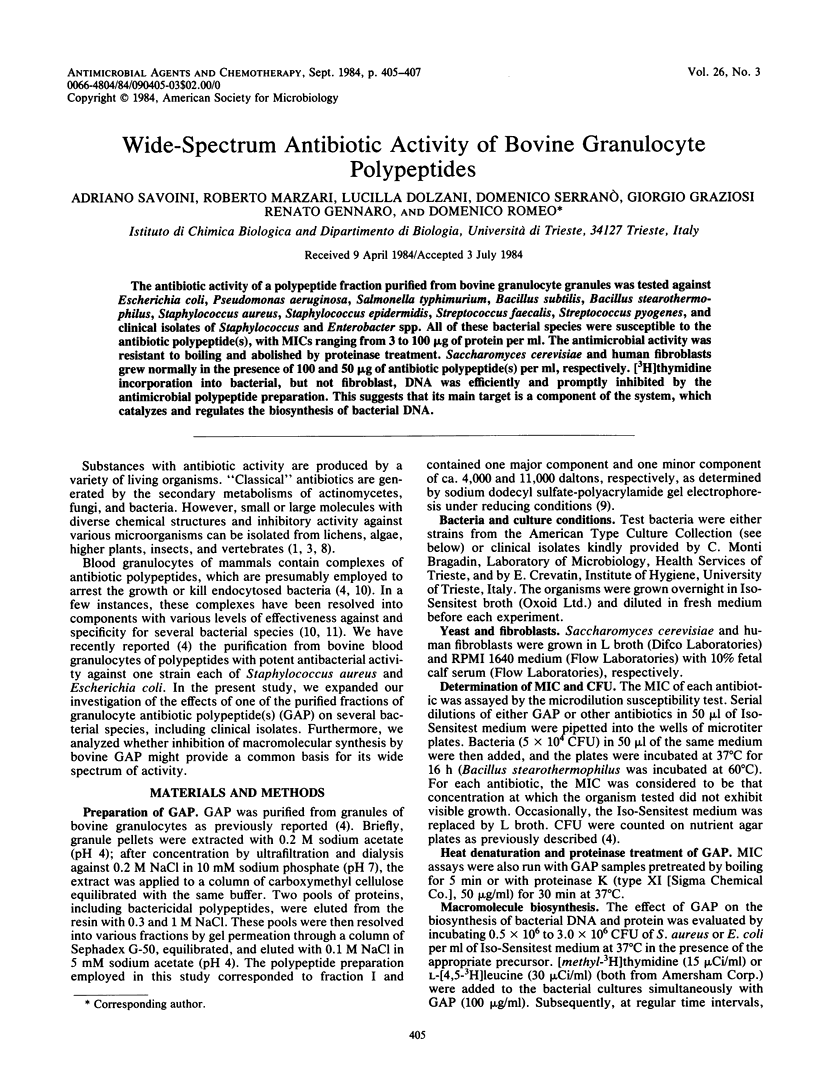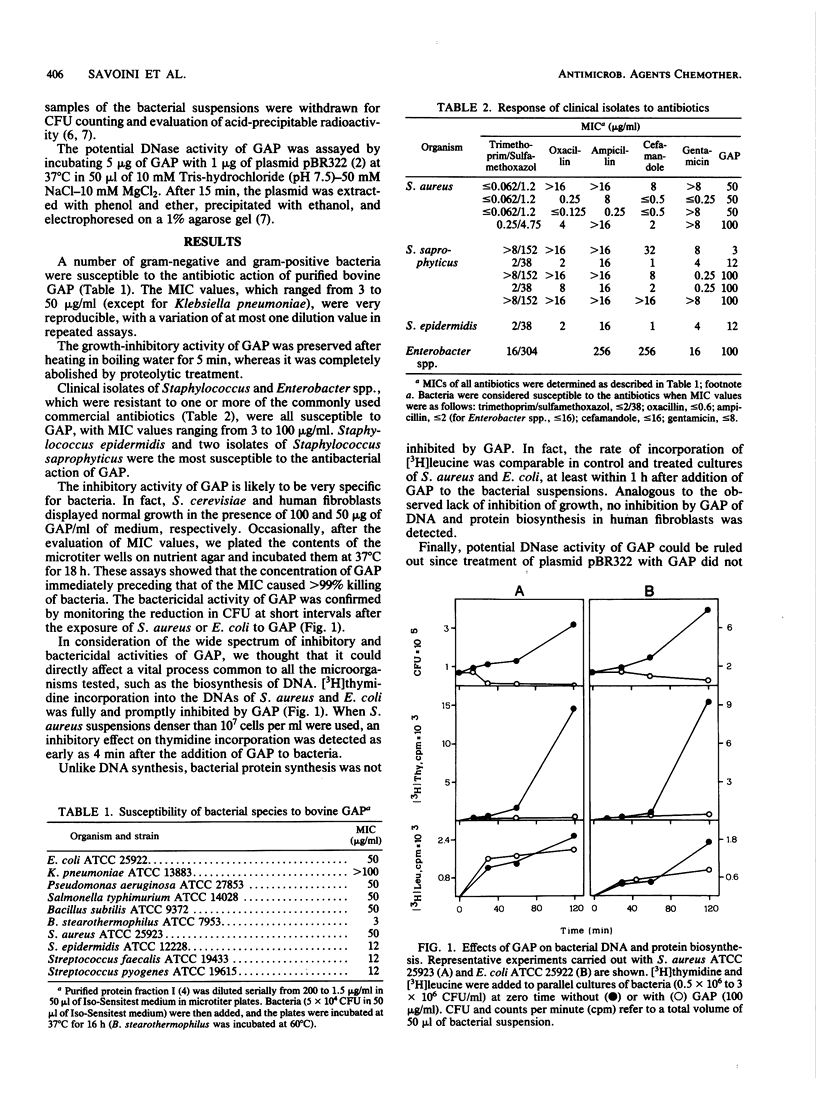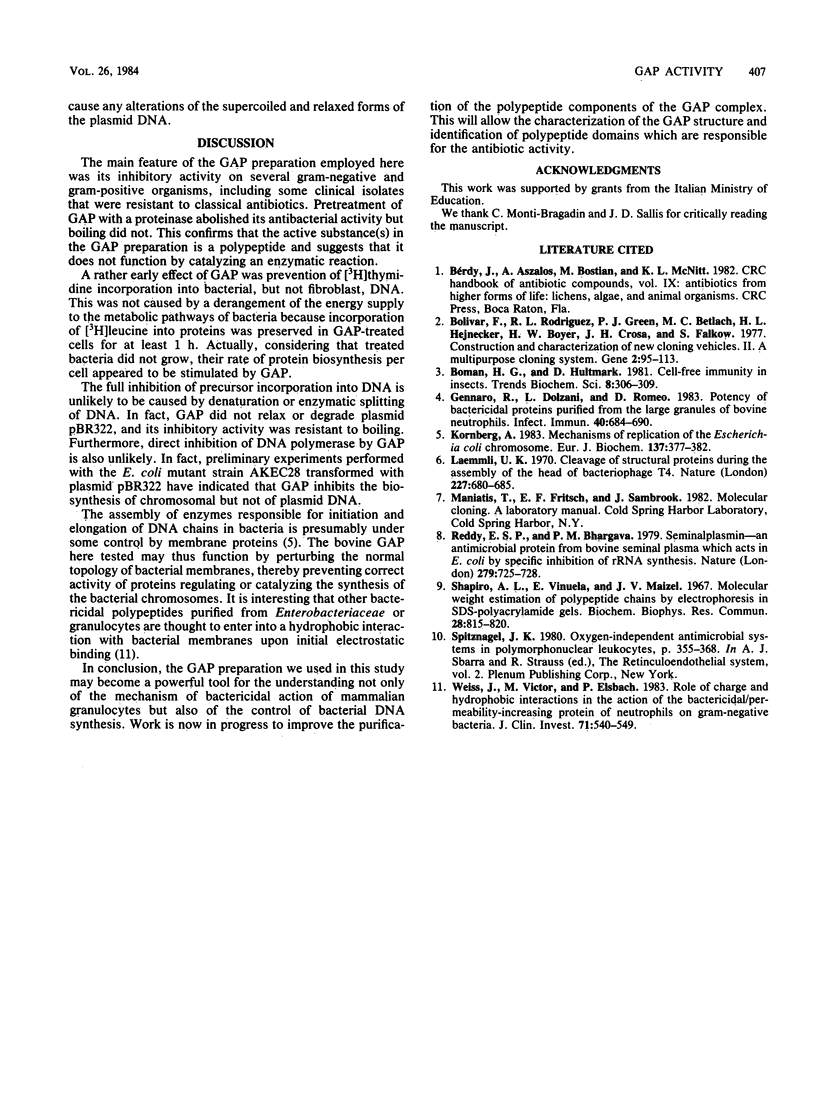Abstract
The antibiotic activity of a polypeptide fraction purified from bovine granulocyte granules was tested against Escherichia coli, Pseudomonas aeruginosa, Salmonella typhimurium, Bacillus subtilis, Bacillus stearothermophilus, Staphylococcus aureus, Staphylococcus epidermidis, Streptococcus faecalis, Streptococcus pyogenes, and clinical isolates of Staphylococcus and Enterobacter spp. All of these bacterial species were susceptible to the antibiotic polypeptide(s), with MICs ranging from 3 to 100 micrograms of protein per ml. The antimicrobial activity was resistant to boiling and abolished by proteinase treatment. Saccharomyces cerevisiae and human fibroblasts grew normally in the presence of 100 and 50 micrograms of antibiotic polypeptide(s) per ml, respectively. [3H]thymidine incorporation into bacterial, but not fibroblast, DNA was efficiently and promptly inhibited by the antimicrobial polypeptide preparation. This suggests that its main target is a component of the system, which catalyzes and regulates the biosynthesis of bacterial DNA.
Full text
PDF


Selected References
These references are in PubMed. This may not be the complete list of references from this article.
- Bolivar F., Rodriguez R. L., Greene P. J., Betlach M. C., Heyneker H. L., Boyer H. W., Crosa J. H., Falkow S. Construction and characterization of new cloning vehicles. II. A multipurpose cloning system. Gene. 1977;2(2):95–113. [PubMed] [Google Scholar]
- Gennaro R., Dolzani L., Romeo D. Potency of bactericidal proteins purified from the large granules of bovine neutrophils. Infect Immun. 1983 May;40(2):684–690. doi: 10.1128/iai.40.2.684-690.1983. [DOI] [PMC free article] [PubMed] [Google Scholar]
- Kornberg A. 14th Sir Hans Krebs Lecture. Mechanisms of replication of the Escherichia coli chromosome. Eur J Biochem. 1983 Dec 15;137(3):377–382. doi: 10.1111/j.1432-1033.1983.tb07839.x. [DOI] [PubMed] [Google Scholar]
- Laemmli U. K. Cleavage of structural proteins during the assembly of the head of bacteriophage T4. Nature. 1970 Aug 15;227(5259):680–685. doi: 10.1038/227680a0. [DOI] [PubMed] [Google Scholar]
- Reddy E. S., Bhargava P. M. Seminalplasmin--an antimicrobial protein from bovine seminal plasma which acts in E. coli by specific inhibition of rRNA synthesis. Nature. 1979 Jun 21;279(5715):725–728. doi: 10.1038/279725a0. [DOI] [PubMed] [Google Scholar]
- Shapiro A. L., Viñuela E., Maizel J. V., Jr Molecular weight estimation of polypeptide chains by electrophoresis in SDS-polyacrylamide gels. Biochem Biophys Res Commun. 1967 Sep 7;28(5):815–820. doi: 10.1016/0006-291x(67)90391-9. [DOI] [PubMed] [Google Scholar]
- Weiss J., Victor M., Elsbach P. Role of charge and hydrophobic interactions in the action of the bactericidal/permeability-increasing protein of neutrophils on gram-negative bacteria. J Clin Invest. 1983 Mar;71(3):540–549. doi: 10.1172/JCI110798. [DOI] [PMC free article] [PubMed] [Google Scholar]


